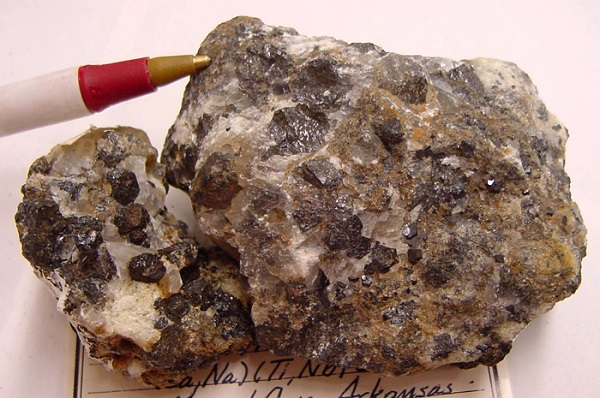Has the holy grail of solar cell materials been found? Ways to use perovskite, a cheap and plentiful mineral, have been bubbling along in research labs for several years now, but with a series of papers in the past year or so showing dramatically increased efficiency, it looks like it might be ready to step into the fray for real.
This is the thesis of a much-discussed Kevin Bullis article this week in MIT Technology Review, which follows on earlier reporting on the blog of Juan Bisquert, an applied physics professor in Spain.

From the blog earlier this year:
Currently, the recently emerged perovskite structure based materials is revolutionizing the photovoltaic field and, as very recent studies demonstrate, they can reach a trade-off between broad spectral absorption range, as well as high crystalline that induces efficient charge extraction reducing energetic costs, with simple and low cost fabrication techniques.
The high-water mark for efficiency using perovskite pigment solar cells came just a few weeks ago with the announcement of a 14.1 percent conversion research-cell performance by Michael Grätzel and his team at École Polytechnique Fédérale de Lausanne (EPFL). This is a far cry from the 3.8 percent efficiency achieved in 2009, and it’s that rapid improvement that has people excited. Bullis reports that researcher now think efficiencies in the 20-25 percent range – on a par with conventional cells in the lab – are well within reach.
Outside academia the startup Oxford PV recently reported a 15.4 percent efficiency for its perovskite solar cells.
As the company explains on its website, these perovskite cells represent a new generation of dye-sensitized cells that Grätzel is largely credited with developing. A key issue in using perovskite had been the unstable nature of the cells, but that was overcome, the company says, by using solid materials instead of a liquid electrolyte.
Bullis says these cells “can be made by spreading the pigment on a sheet of glass or metal foil, along with a few other layers of material that facilitate the movement of electrons through the cell.” It’s a simple process using an inexpensive material, exactly what the world has been looking for, potentially driving the price of solar cells, now around 75 cents per watt, to as low as 10/watt.
That would certainly help in making solar competitive with fossil fuels, but one thing Bullis doesn’t mention is that the cost of the solar cell is just one part of the complete cost of installing a system. So if the “balance of system” costs aren’t driven down, even free solar cells might lead to the installed cost of systems falling by perhaps 10 to 20 percent. An excellent achievement, but perhaps not revolutionary.